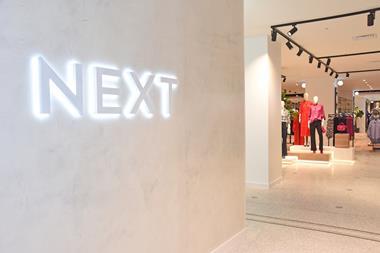Retailers in China will need to rethink their strategy in the country as consumer behaviour has started to change rapidly.
Chinese consumers are becoming similar to Western consumers, moving from purchases that satisfy basic needs to more emotionally driven, brand-loyal purchases that reflect individual tastes, a report by consulting firm McKinsey says.
The trend is creating a dichotomy in the Chinese economy. While some shoppers are becoming more ‘mainstream’ and exhibiting Western-style shopping behaviour, the majority are still ‘mass’ consumers who shop to satisfy basic needs. The resulting complexity will require different retail strategies across the country, and more skill and flexibility in retailers’ approach.
The report says the fast emergence of mainstream consumers will require quick action from retailers. It says: “A fast-growing segment of the population is becoming more self-indulgent in purchasing activity, more individualistic in wants and needs, and more loyal to favourite brands—even while maintaining some of the traits for which Chinese consumers are renowned, such as spending lots of time in stores comparing products.”
Retailers will need to cater for these changing tastes, and perhaps diversify their strategy in different parts of the country. A wider portfolio of brands will be needed to appeal to the different kinds of shoppers. While speed and scale have been the defining characteristics of Chinese retail in the past 15 to 20 years, from now on skill and flexibility will be a core part of success, McKinsey says.
Over 80% of China’s urban population are still mass consumers, meaning they have an income of between $6,000 and $16,000 – enough to cover basic needs. By the start of the next decade many of these will have graduated to mainstream consumers, with an income of $16,000 to $34,000. Nearly 400 million consumers could fit into this bracket by 2020. Currently, mainstream consumers tend to live in larger cities that are clustered around the coast, and they tend to be younger than mass consumers.
McKinsey surveyed 10,000 Chinese consumers across 44 cities and found they still show some strongly Chinese traits. Most still save a lot, for instance, with the average rate of saving being 22% of income. While internet spending is growing quickly, the store experience is still extremely important for Chinese shoppers. They tend to trust salespeople more than their Western counterparts, and the store environment is crucial for making a sale. Consumer confidence, meanwhile, has slipped slightly as economic growth slows and the Eurozone crisis impacts on Chinese exports. But Chinese shoppers are still more positive about their future than in many other countries.
McKinsey says retailers will need to work hard to appeal to this fast-changing demographic – but with the top 225 Chinese cities expected to contribute 29% of global GDP between 2007 and 2025, the effort could be worth it.


























No comments yet